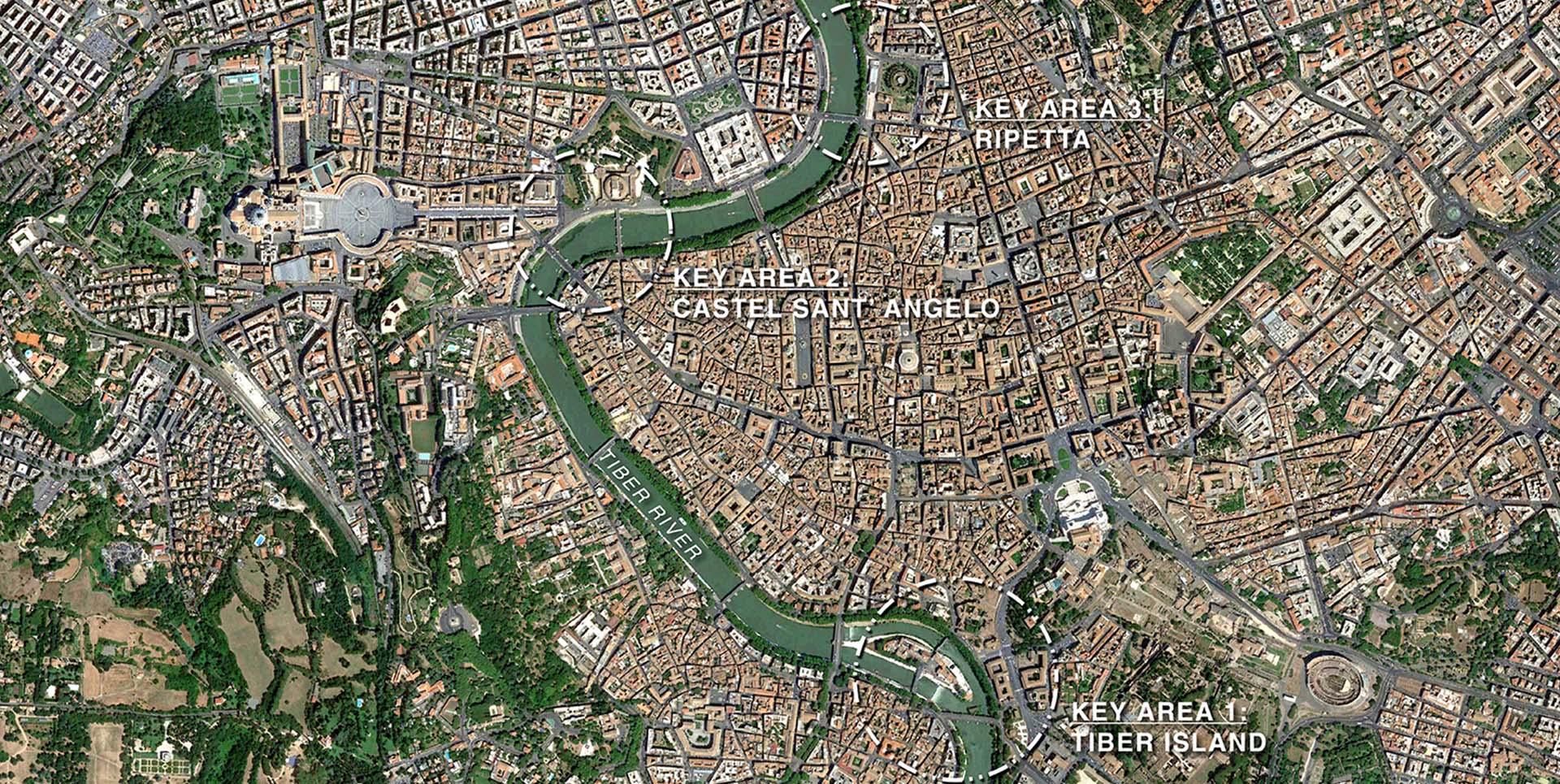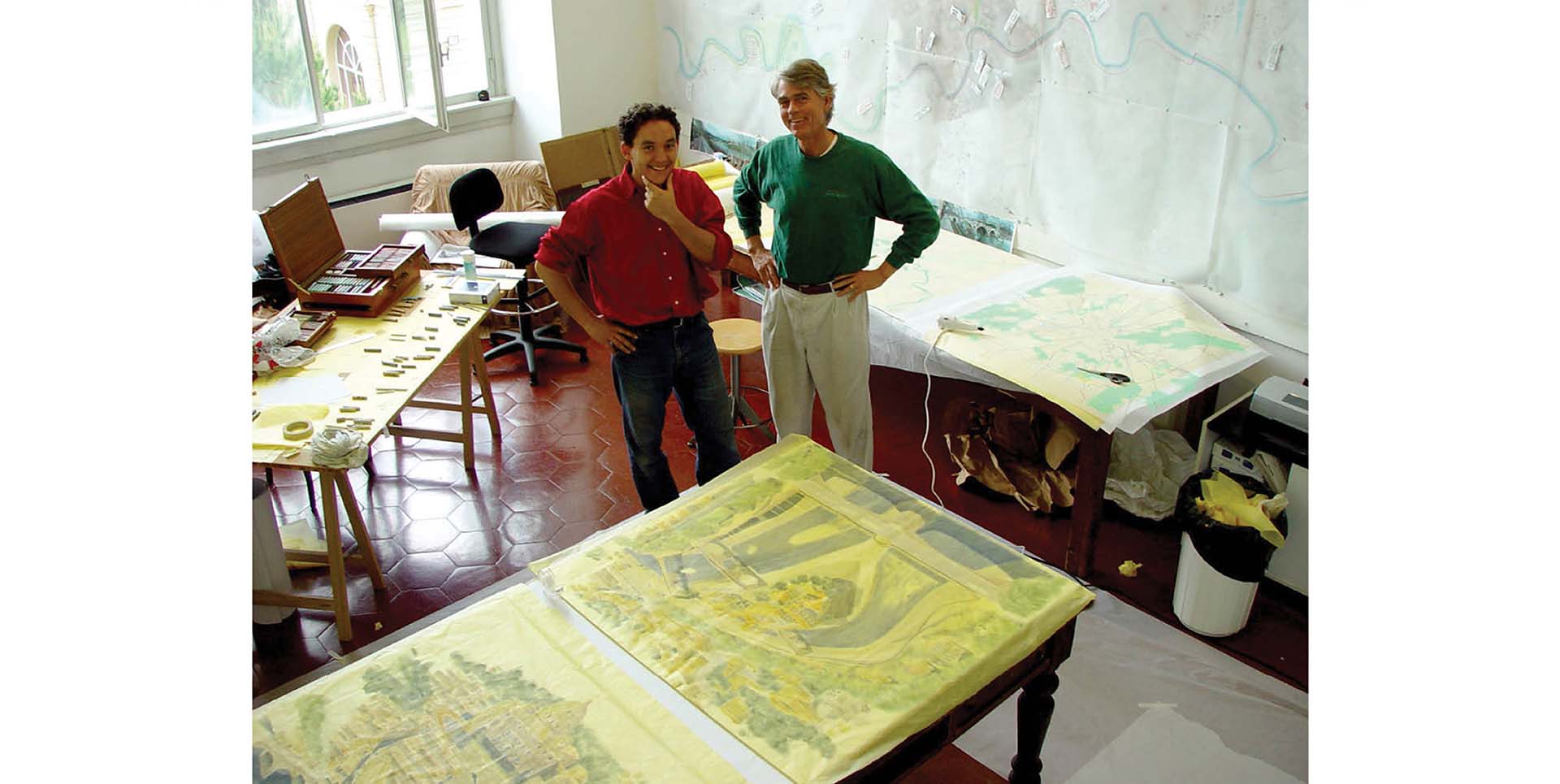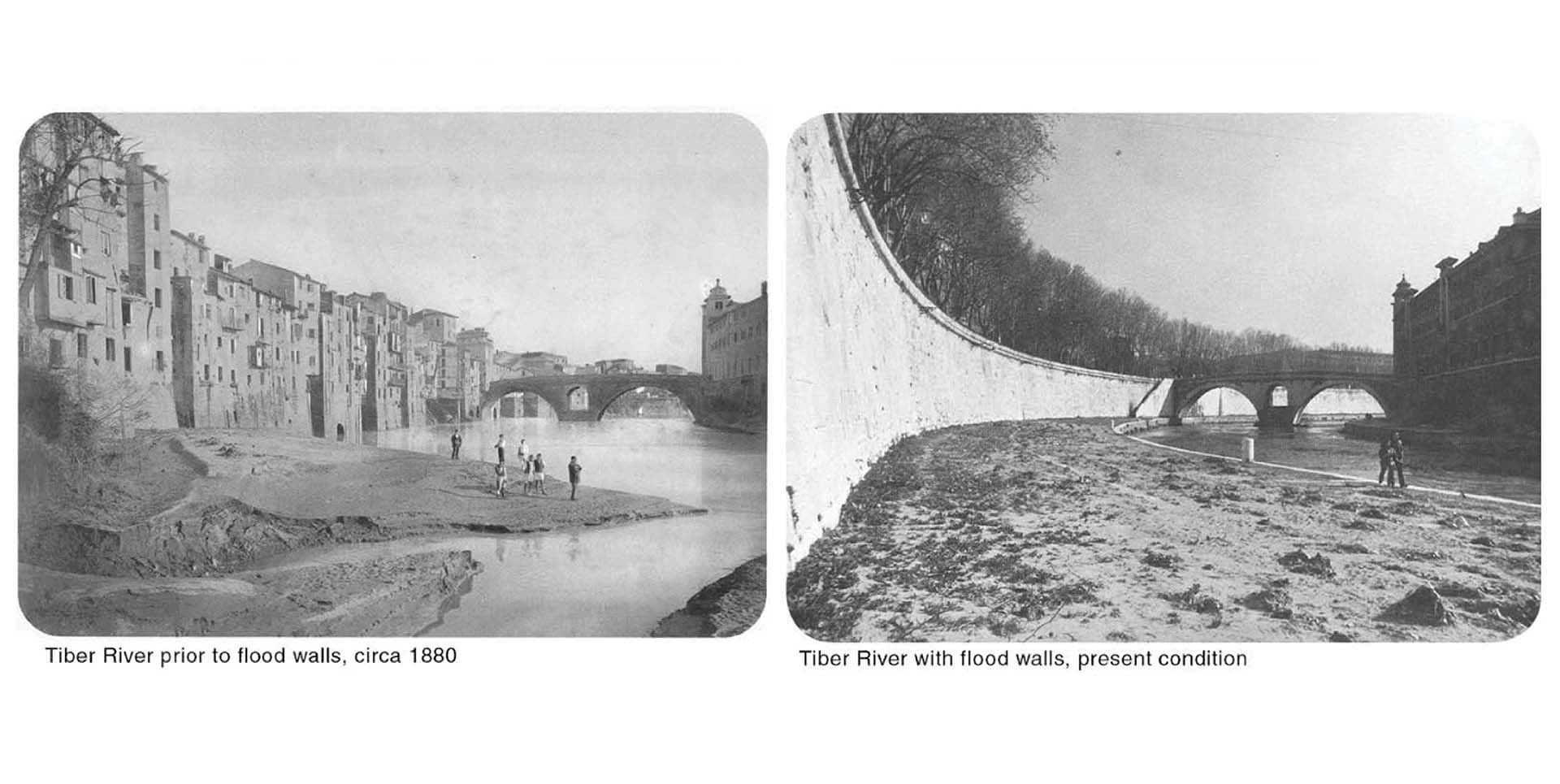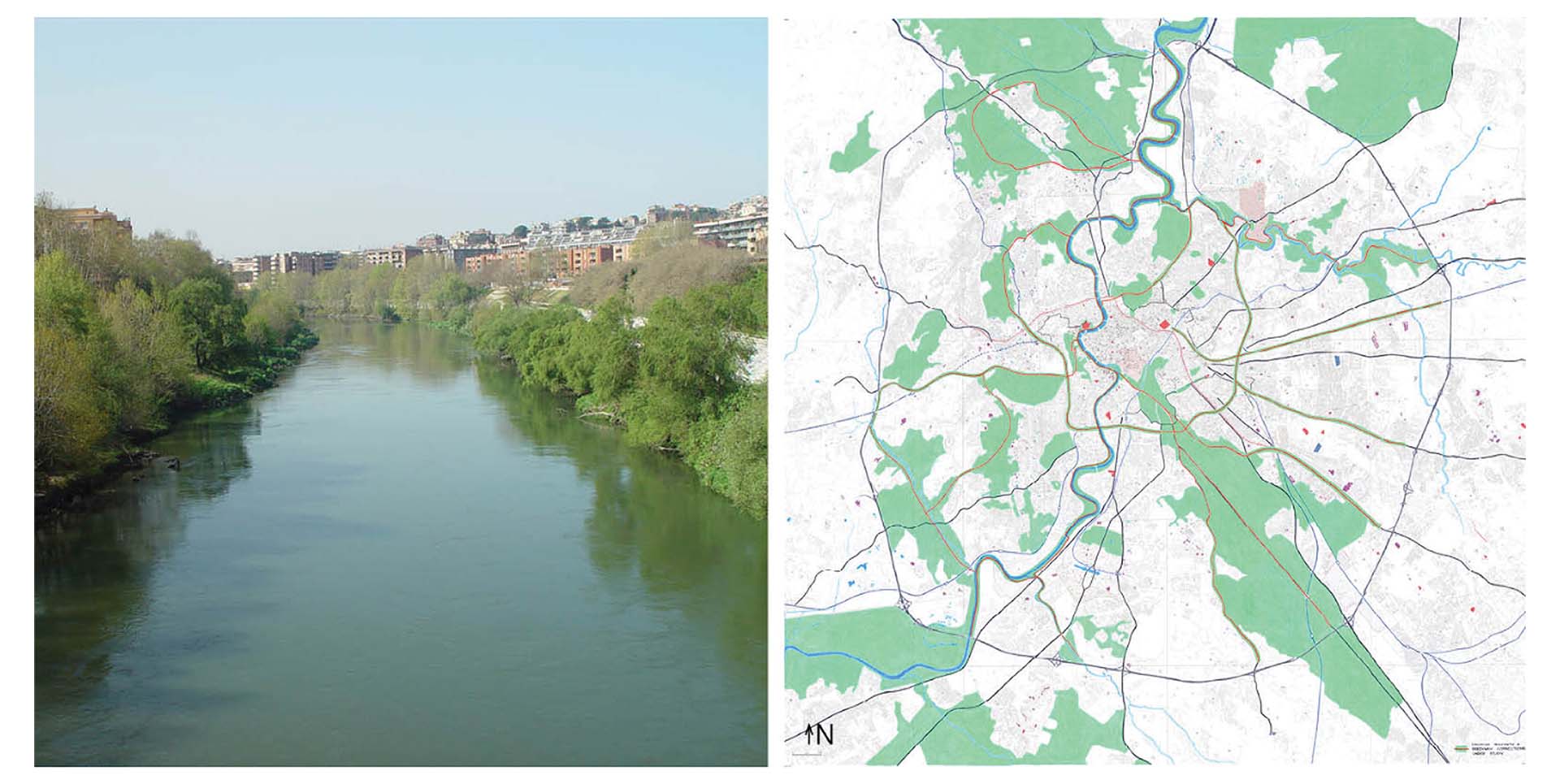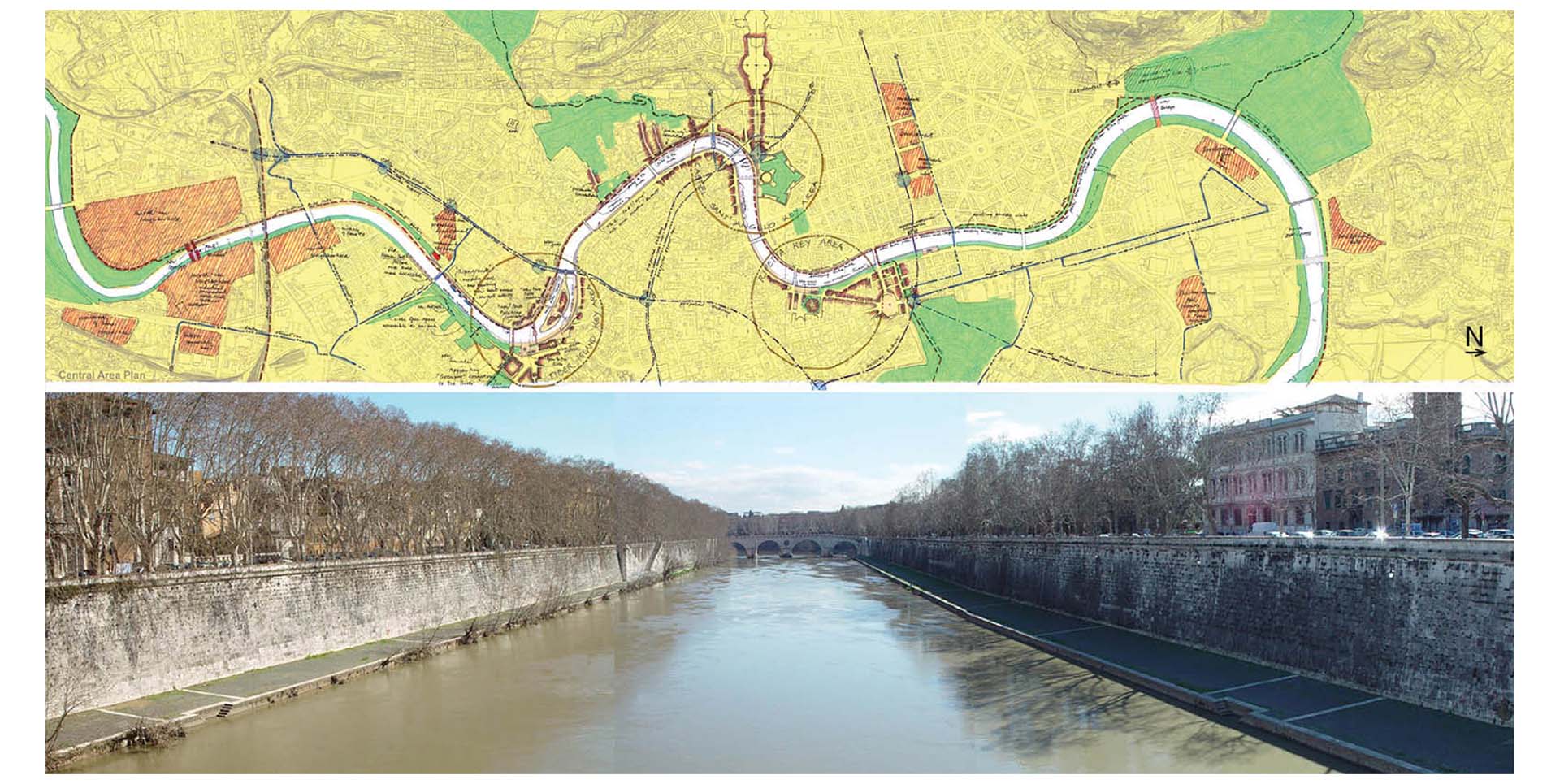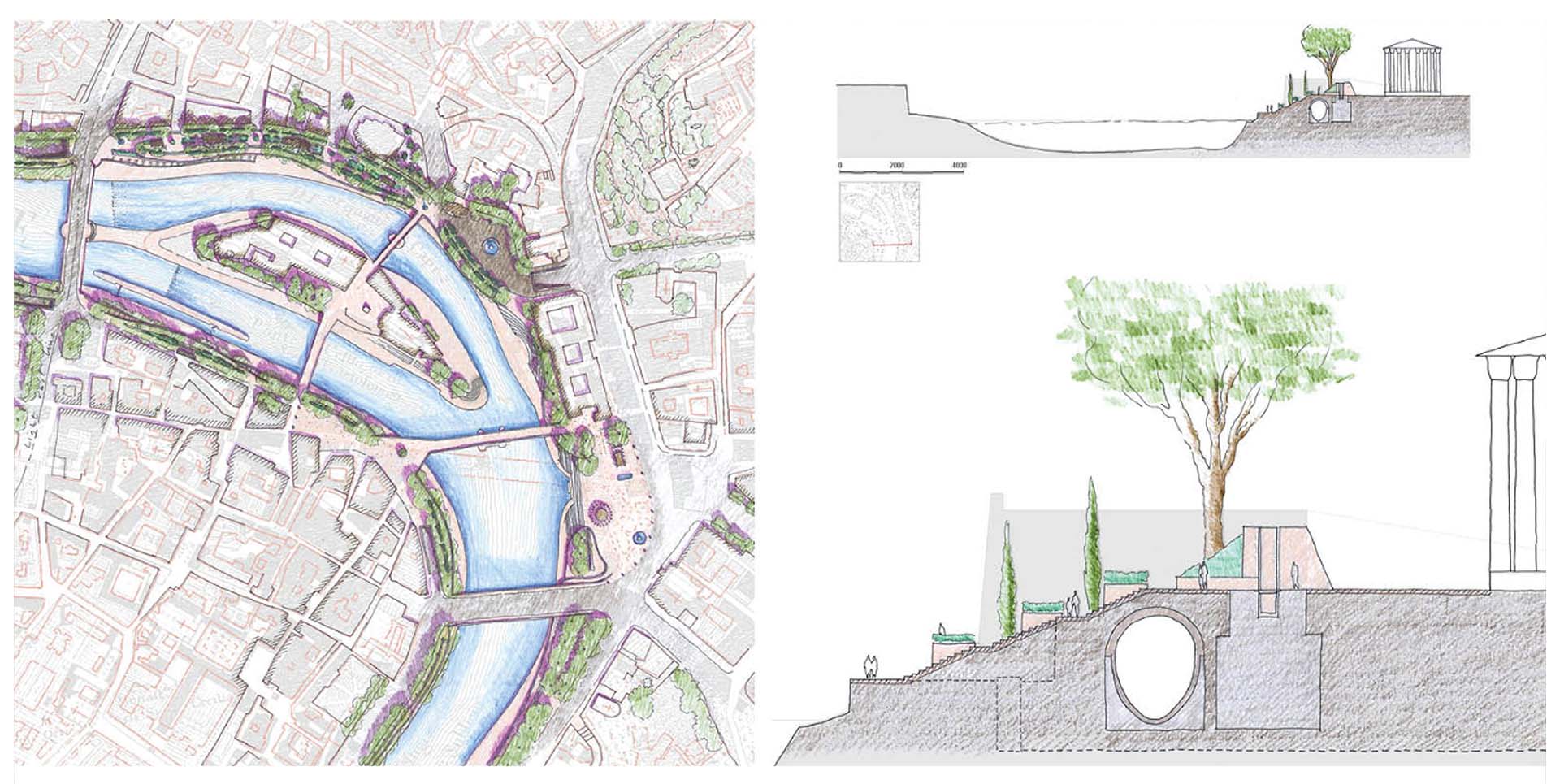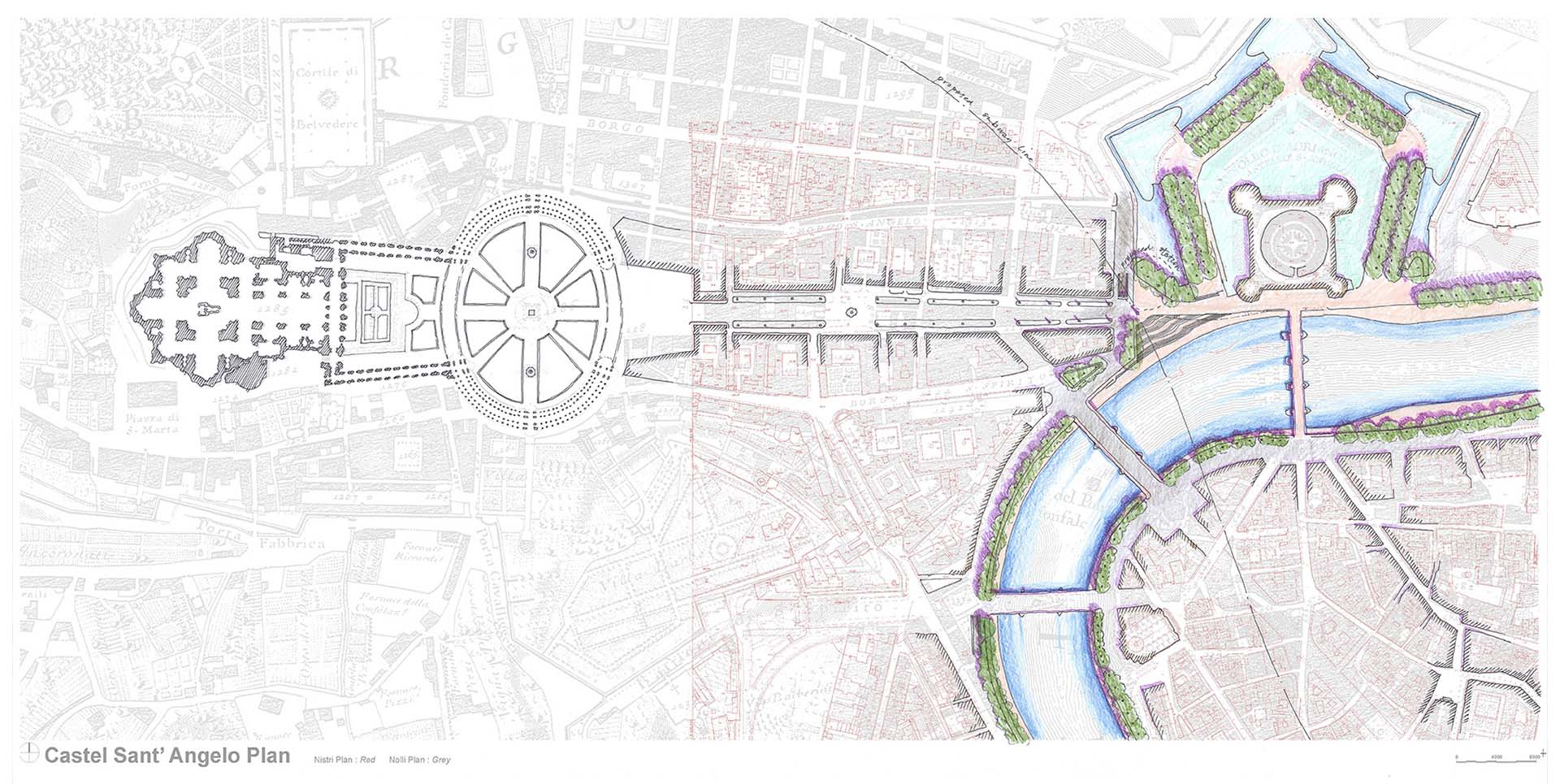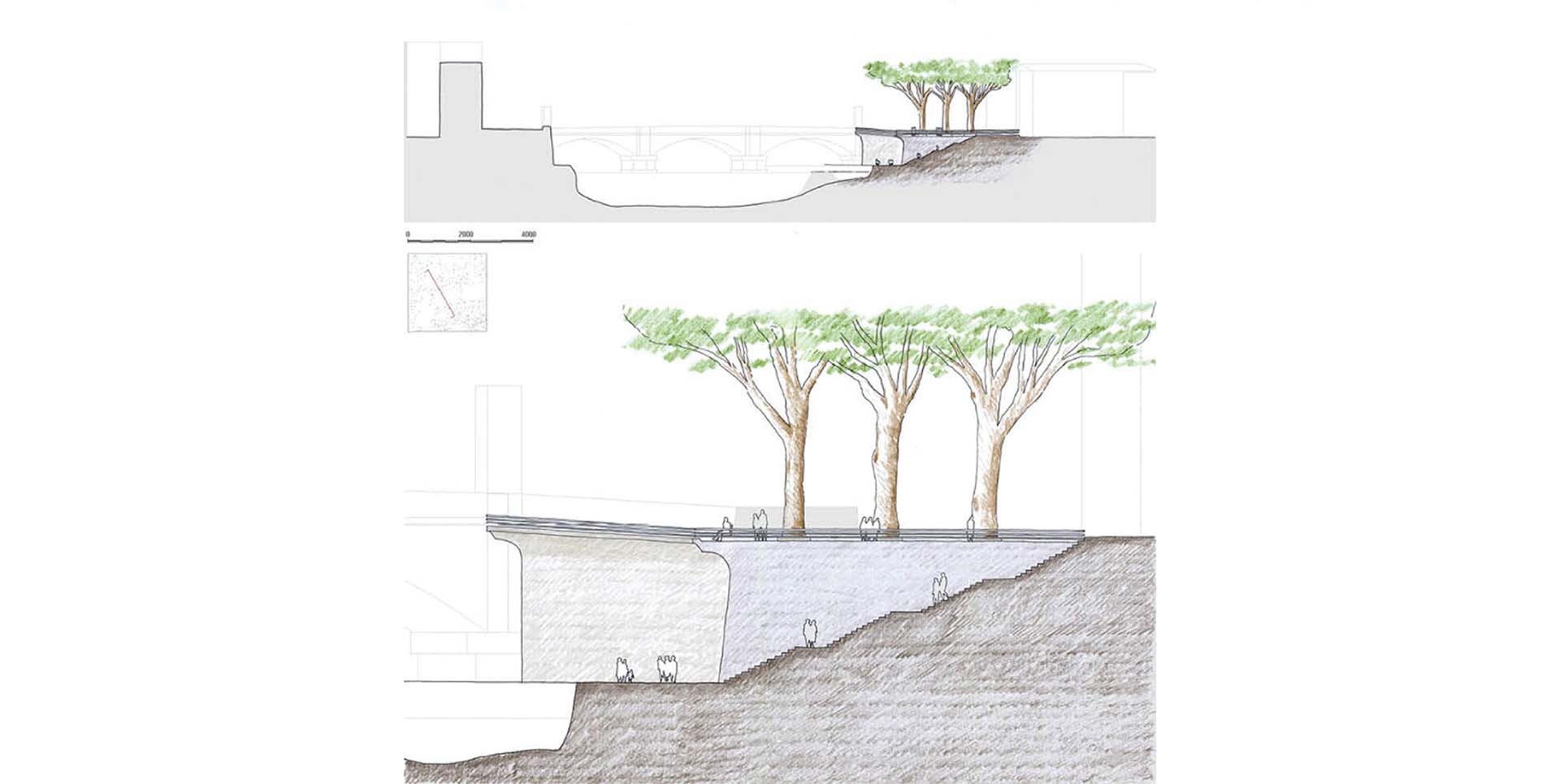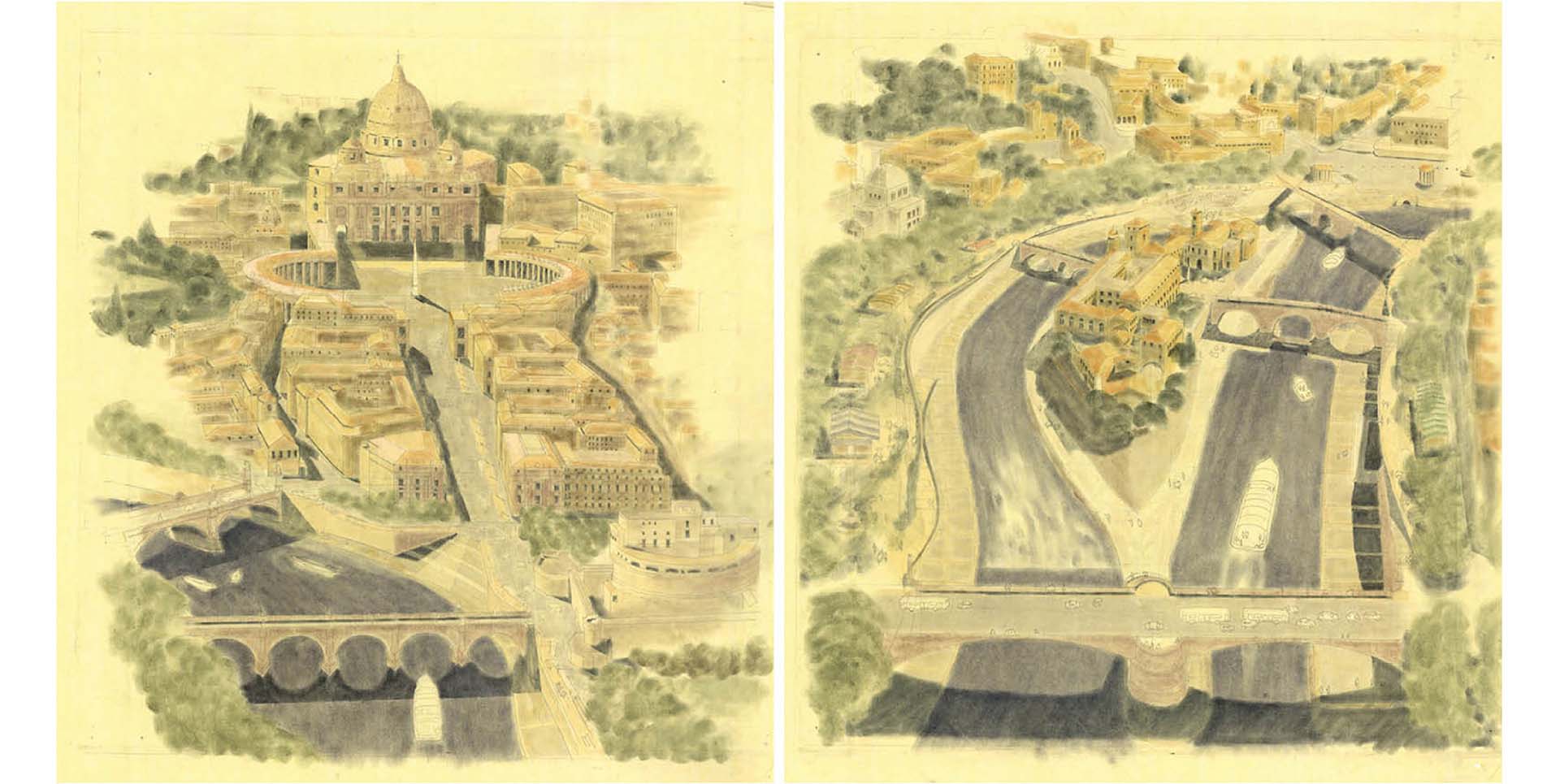Tiber River
Location: Rome, Italy
Client: American Academy in Rome
The goal of the work is to offer a vision of an active Tiber River basin in which strategic modifications to the riverbanks and walls can better connect the River to the everyday life of the city, and recommend realistic interventions that address the issues posed by the proposed modifications. This approach is at times opportunistic in identifying potential river improvements and benefits, ranging from small-scale, incremental developments to aggressive, large -scale urban renewal to accomplish these goals. The interventions include park or greenway connections, river adaptations to promote boating, modifications to the bulkhead to allow river access, new bridges, new cultural projects to activate the river-side, and urban mixed-use zones that help to support an active River Basin over the long-term.
The proposal identifies three key areas to study, located at three important bends in the river as it passes through Rome. The recommendations include reducing the height of the flood walls while maintaining a 100-year flood standard, breaking up the monotony of the existing flood wall with viewing terraces and socializing spaces, and connecting the upper and lower areas of the Tiber by providing a lock at Tiberina Island to make the river navigable again. Street-to-river stairs, new pedestrian zones, revised circulation, riverfront parks, and new land uses such as cafes and civic projects are components of the plan recommendations. The study also explores Rome’s regional open space context and proposes a new open space and bikeway network, utilizing existing rights-of-way including rail and ancient Roman roads.
Services
Urban River Revitalization Planning, Regional Open Space and Development Planning
Program
Park or greenway connections, river adaptations and modifications, new bridges, new cultural projects, urban mixed-use zones, pedestrian access improvements, and open space network
Site Area
13 Kilometers of the Tiber River
Completion Date
2004
Awards
- Rome Prize Fellowship awarded in 2002 to William H. Fain by the American Academy in Rome
Revitalization Proposal for the Tiber River, Forum Tevere, Rome; William H. Fain Jr.
Similar Projects

Ballpark Village

Central Business District
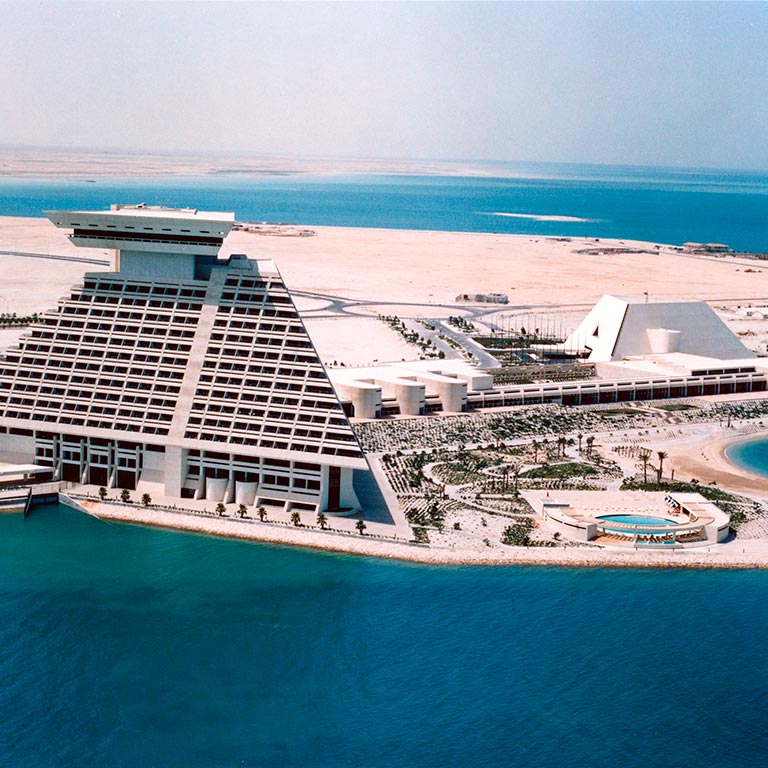
Doha New District
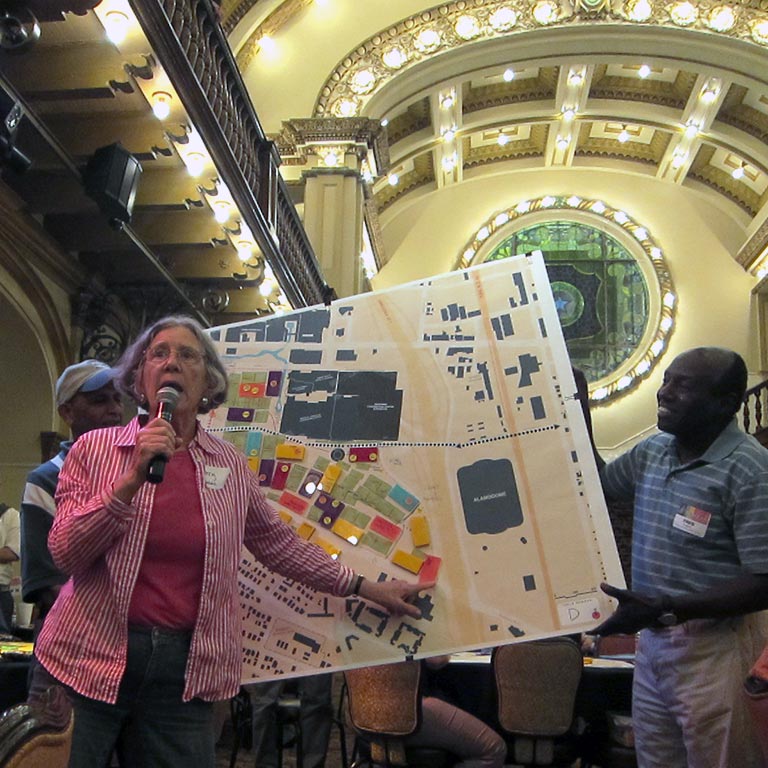
HemisFair Park Redevelopment
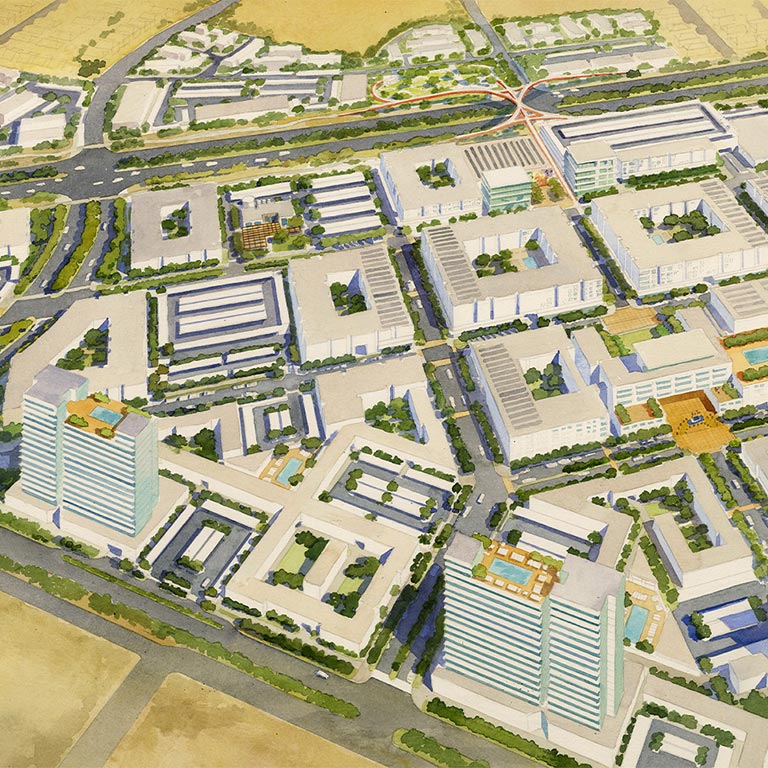
Henderson West
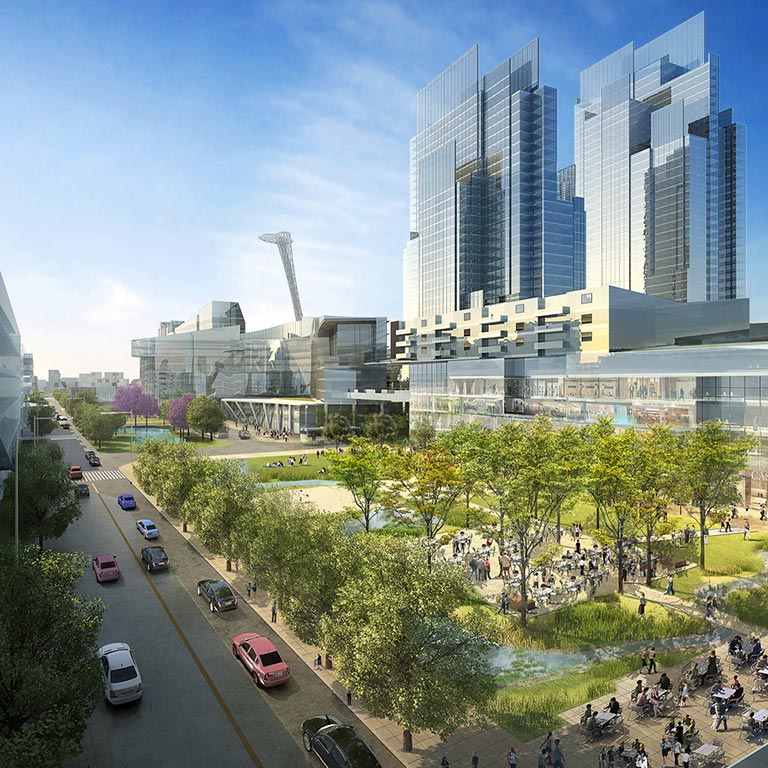
Jiading New Town
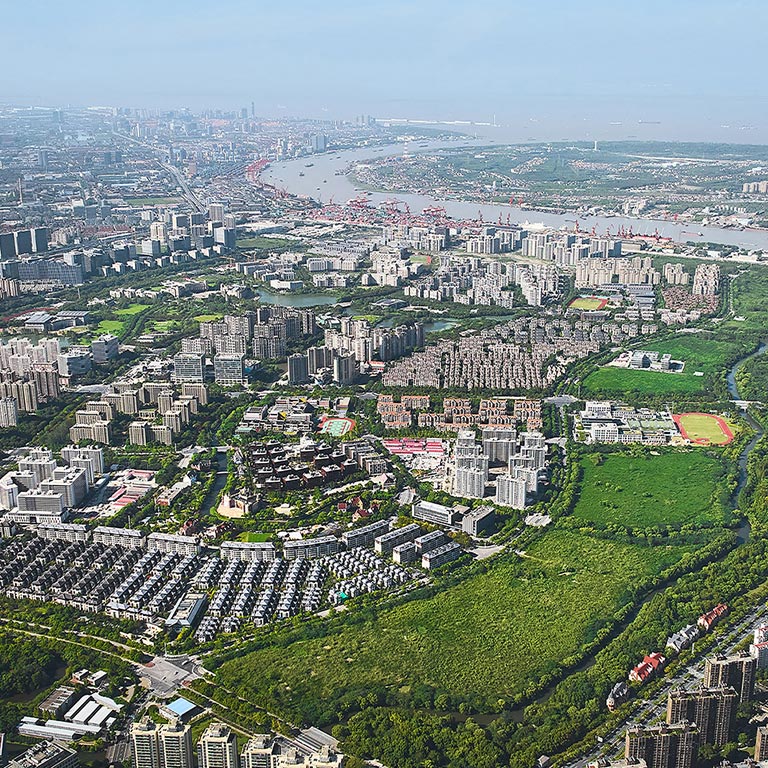
Jiangwan New Town
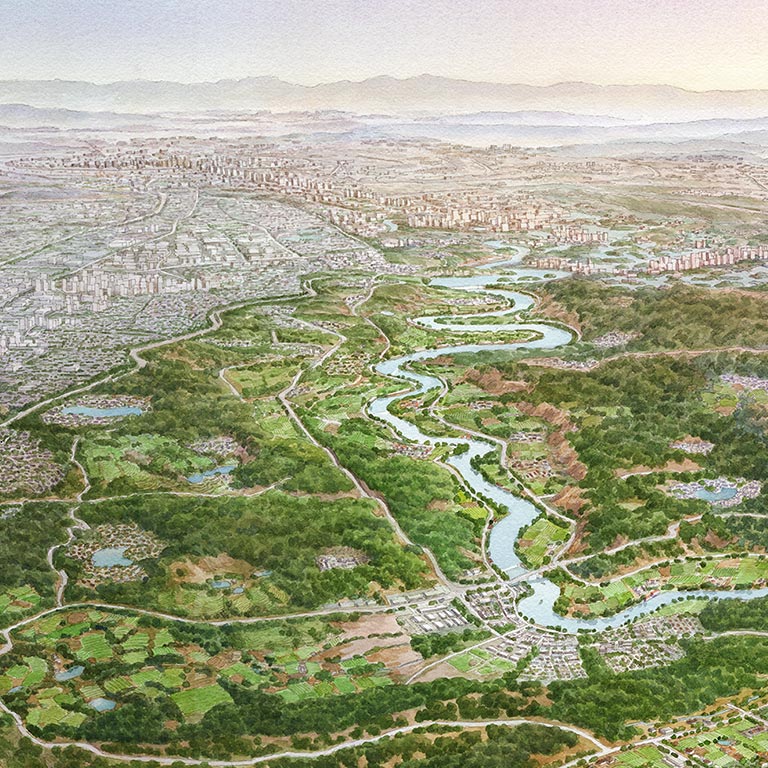
Jinjiang River Corridor
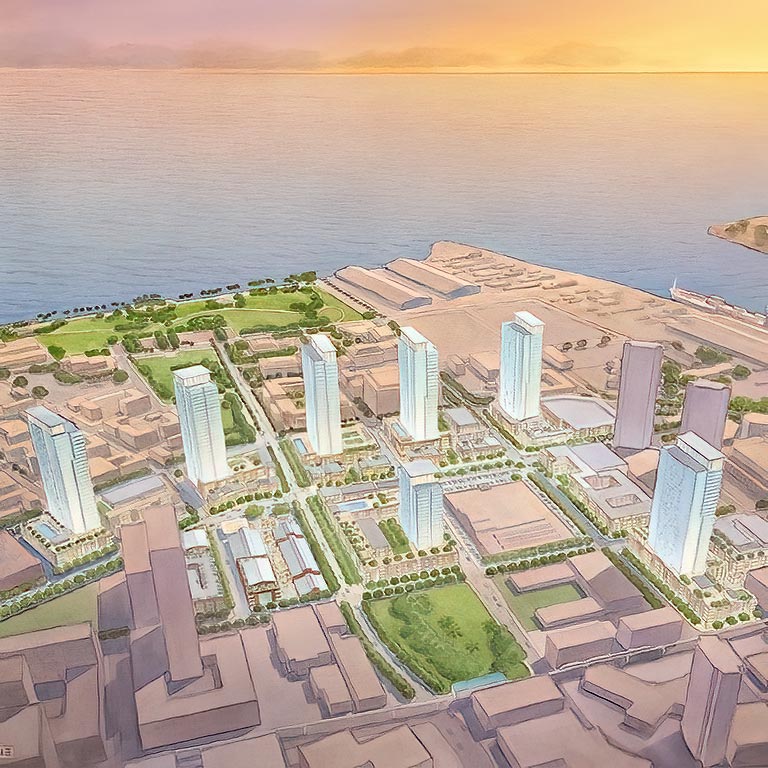
Kaka’ako District of Honolulu
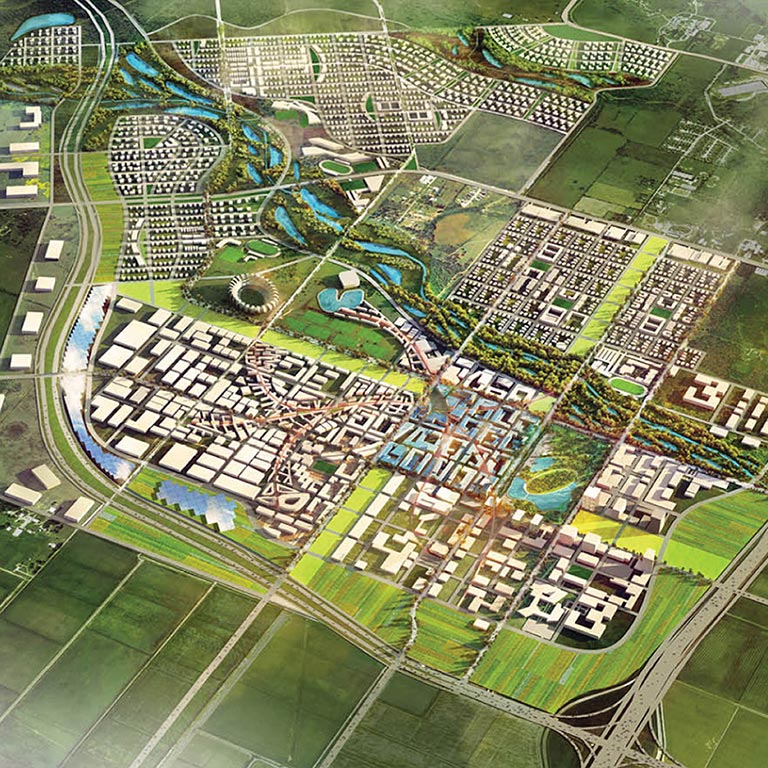
Knowledge City
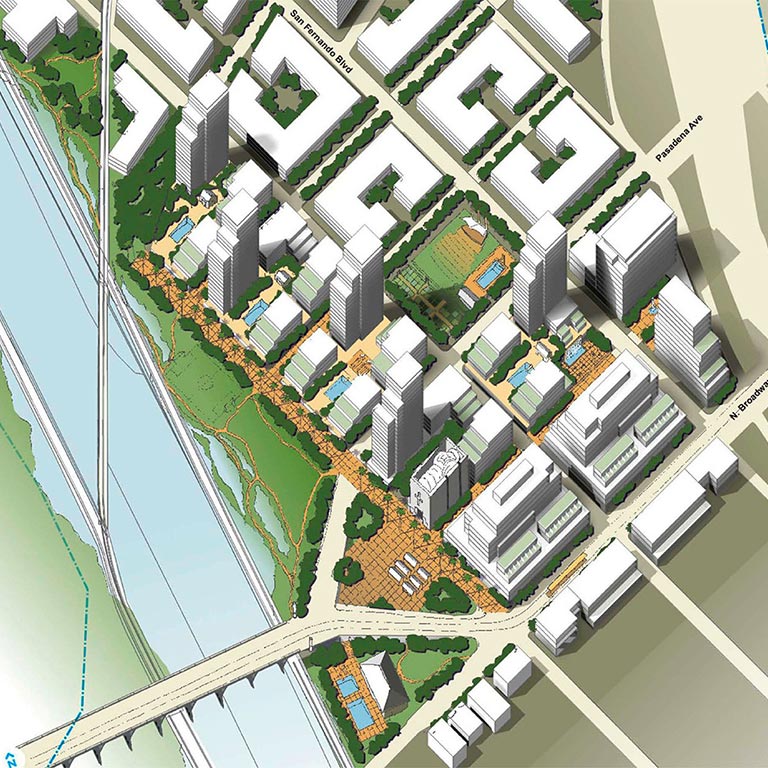
LA River Town
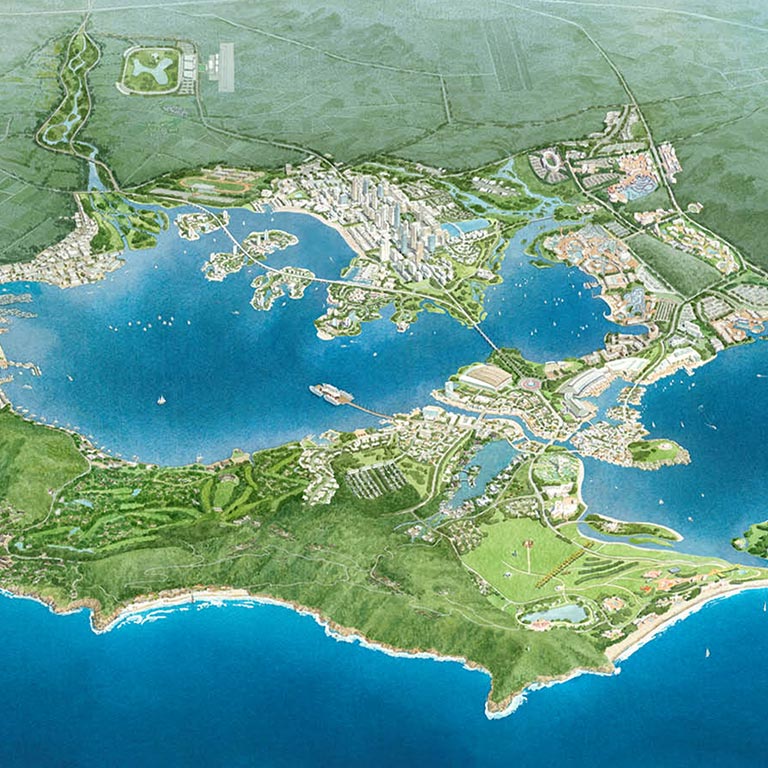
LingShui Resort
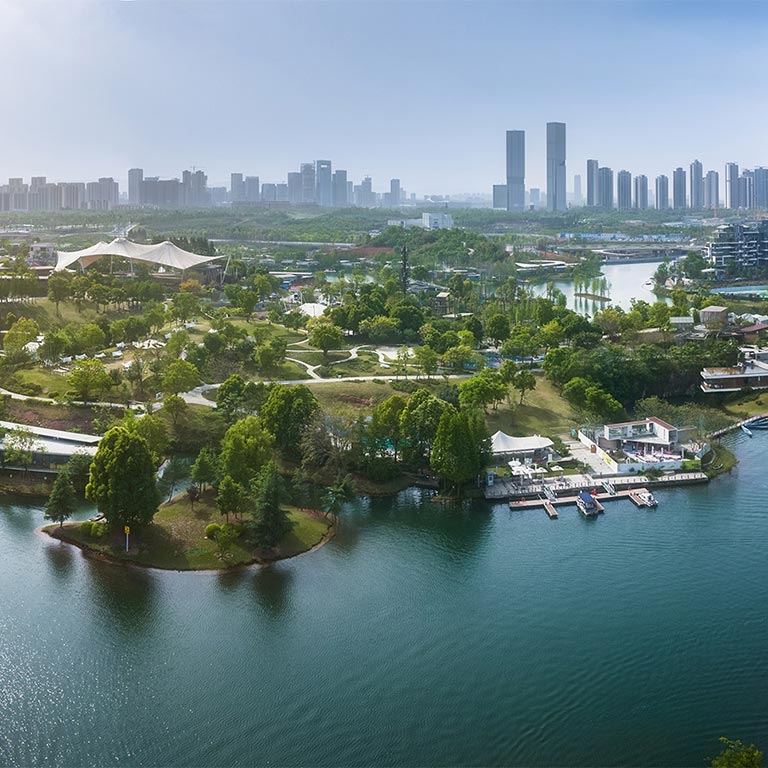
Luxe Lakes Eco-City
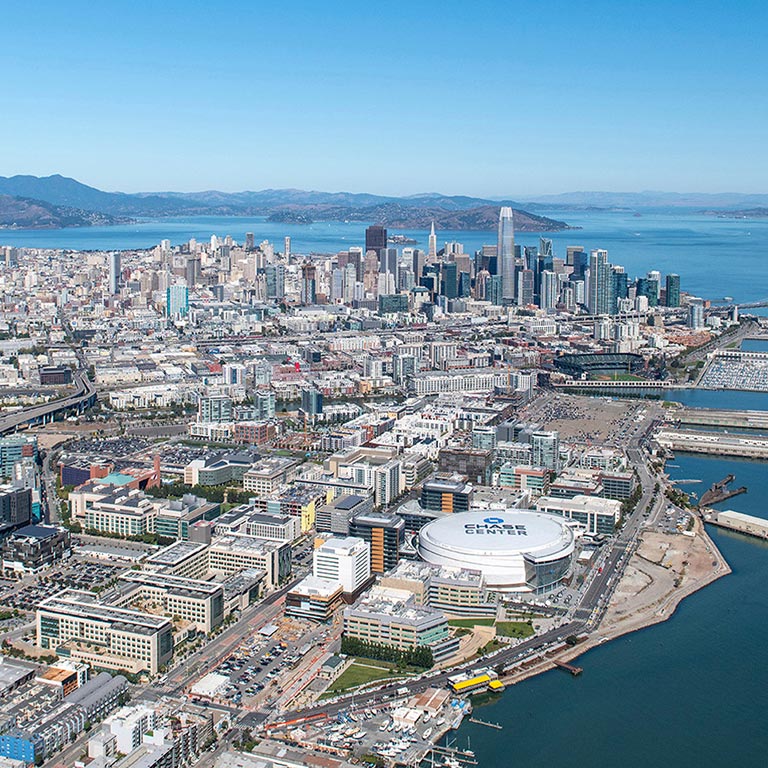
Mission Bay
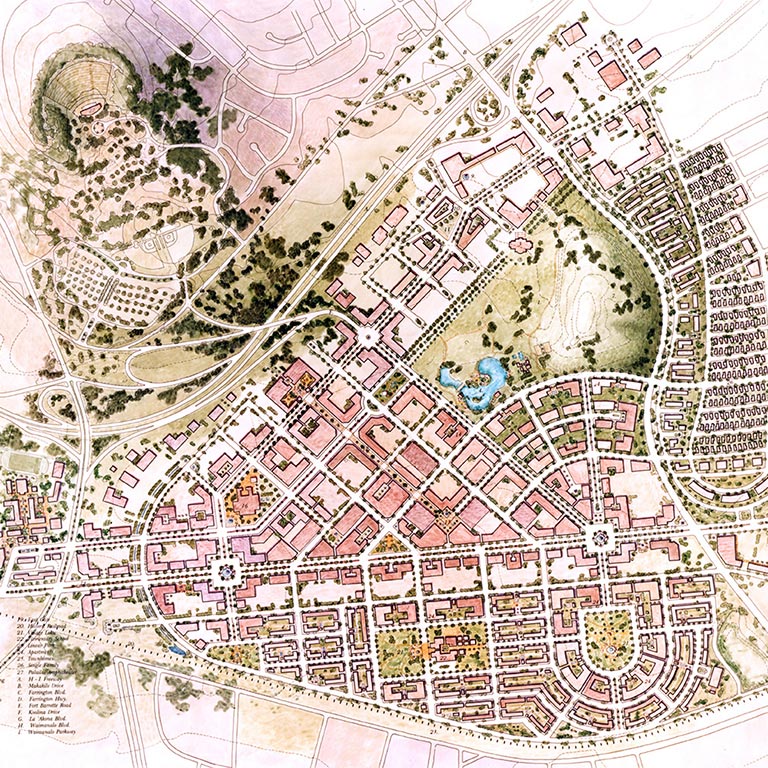
The City of Kapolei
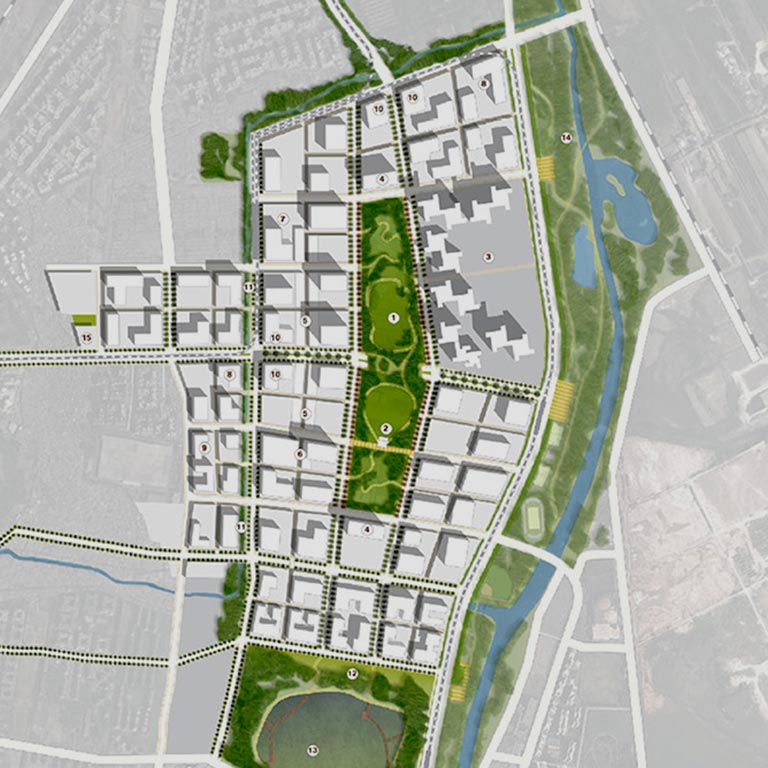
Wadala Central Business District
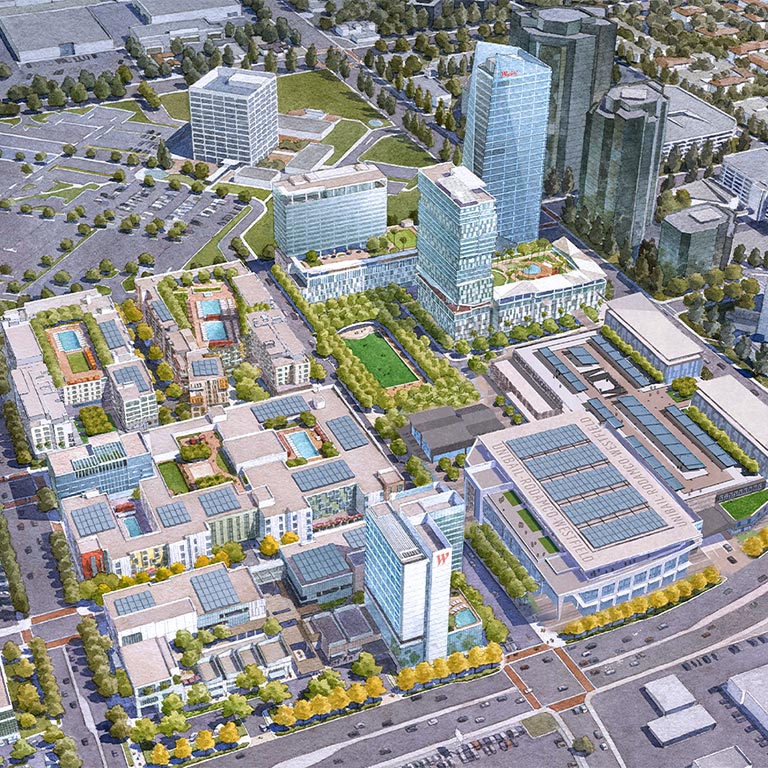
Westfield Promenade
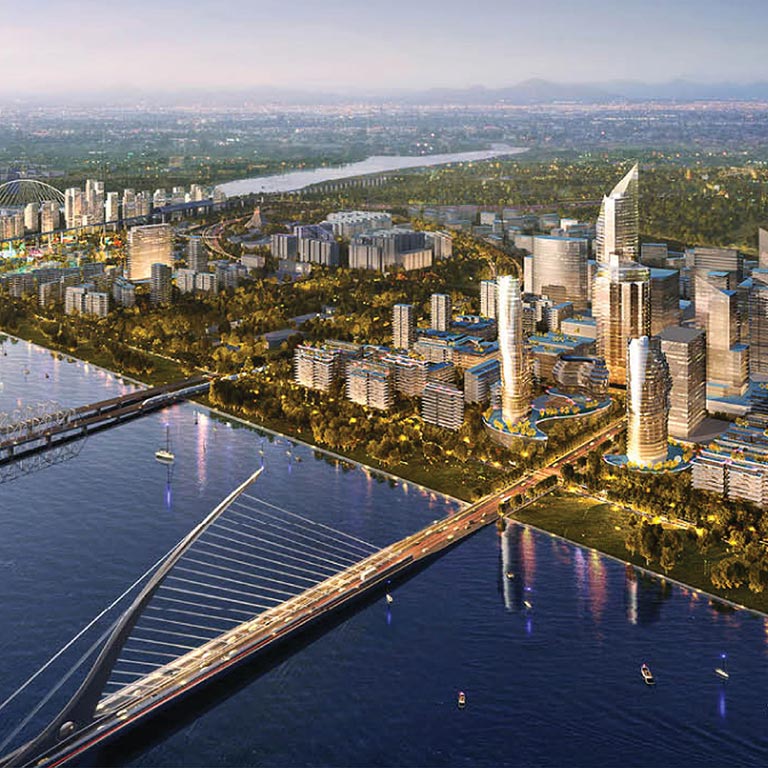
Youxian New Town
Unlock your Vision
Creative endeavors begin with great friendships. Discover how Johnson Fain can work with your group to translate an idea into an award-winning, community engaging environment.
